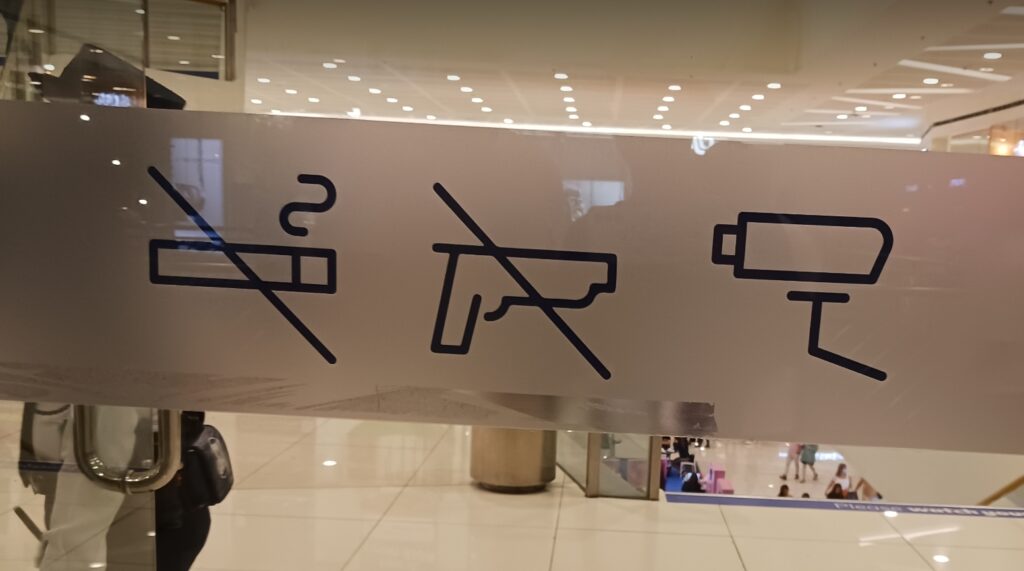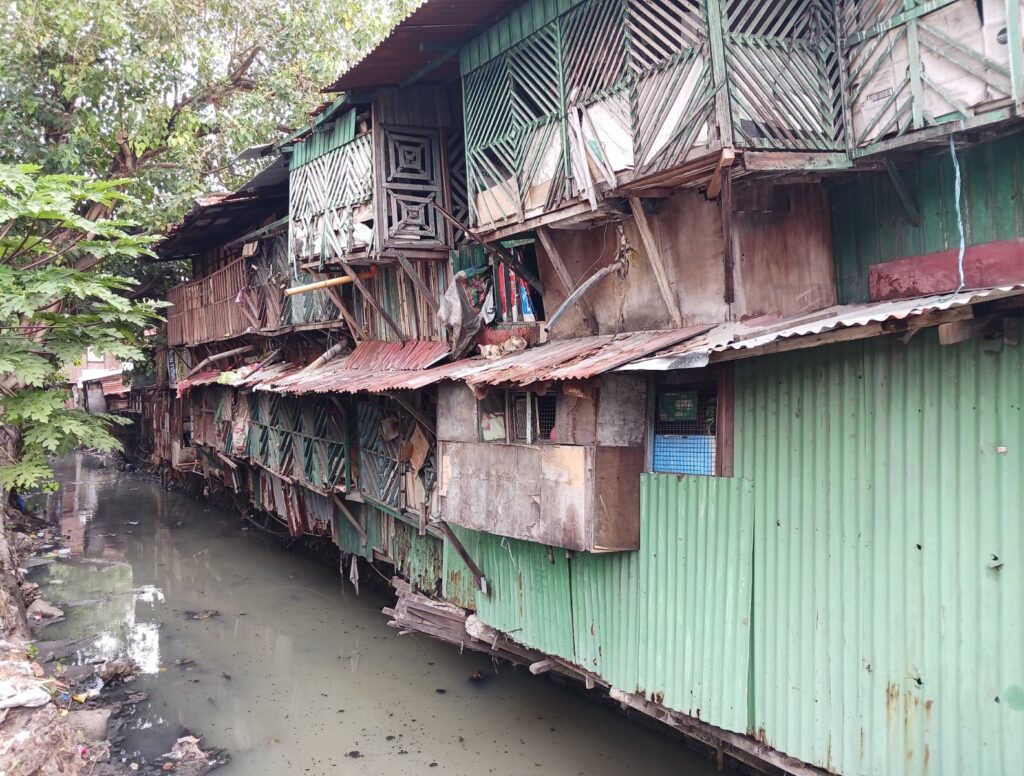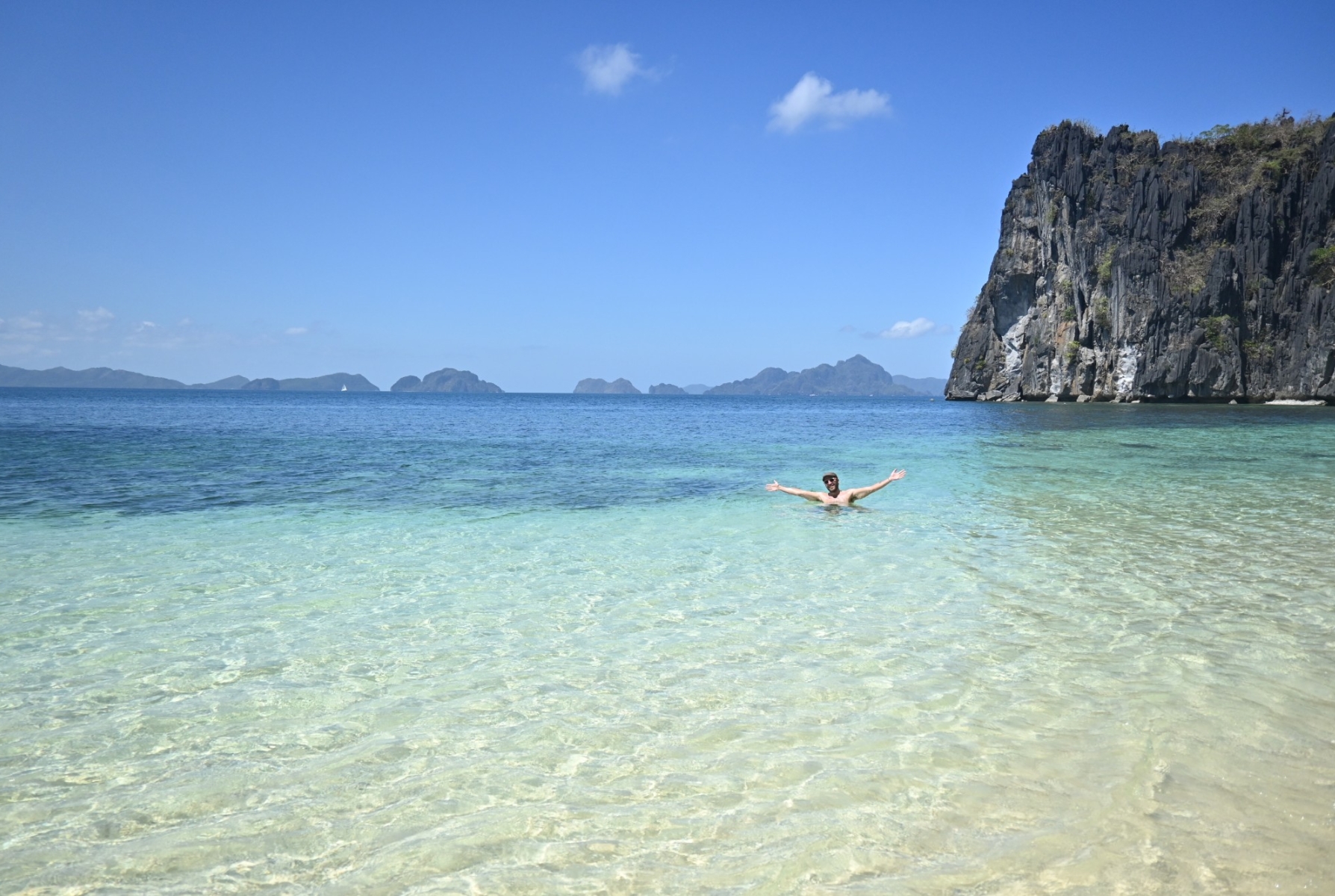THE HAIRY GIRAFFE… IN THE PHILIPPINES
After two weeks in the Philippines, it’s time to reflect. How did we experience this journey? What were our joys, disappointments, questions, doubts, and discoveries? This is not merely an assessment of a country but rather of a trip—how we perceived it individually and subjectively.
 We are François and Benjamin, Canadian and French giraffe hairstylists and travel enthusiasts. On this blog, discover our travels, tips, moods, and everything you need to become a giraffe hairstylist and embark on travelling the world. An honest blog with photos guaranteed 100% unfiltered and untouched. |
François’ Travel Reflections
The Philippines marked the fifth destination on our world tour. It also served as our first beach destination after more than two months of travel, and the only one for quite some time. It was indeed the picturesque beaches and stunning landscapes that convinced us to include the Philippines in our world tour.
From the get-go, it’s undeniable that the Philippines truly boasts magnificent landscapes. I will cherish fond memories of the translucent turquoise waters of Coron and El Nido. Those waters beckon you to dive right in. We were both captivated by the scenery of El Nido as well. It must be said, the towering mountainous cliffs cascading into the sea are truly impressive.
In the Philippines, there’s a genuinely soothing effect to sitting on a beach, listening to the gentle lapping of the waves while watching birds soar above. Add to that a cold soda in hand and the feeling of being alone on a secluded island, and it truly feels like paradise. If we’re also motivated enough to peel ourselves off our towels, set aside our book and soda (which we always savor with every sip), to don a mask and snorkel and dip beneath the water’s surface, a world teeming with life and colors unfolds before us.

Reading blogs, that’s pretty much the impression we’ve formed of the Philippines. We’re eagerly anticipating experiencing all these wonderful moments. We’re also excited to meet the Filipinos described by everyone as being always smiling and exceptionally kind.
These same bloggers also tantalize our taste buds by talking about the flavors of the Philippines with exotic and amusing dish names like adobo and halo-halo.
Indeed, the Philippines seems to be the paradise for any beach-loving and exotic-seeking vacationer.
Yes, but…
Yes, there is a “but.” And even several. What many influencers we encountered during our two weeks don’t show is the flip side of this paradise. They don’t mention (or at least not loudly) that you’re rarely alone on a beach in the Philippines. First of all, beaches are rarely easily accessible solo. To enjoy the postcard-perfect beaches, you have to pay for tours. In the Philippines, the norm is to have between 20 and 25 people per boat. So, there are between 19 and 24 tourists too many if you were hoping to have the beach to yourself. The other thing is that all the boats leave at the same time and follow the same routes. So, your boat won’t be the only one docking at the pristine sandy beach you’ve been dreaming of. It will be among a horde of a good dozen other boats. So, if we do a conservative calculation: 12 boats x 20 passengers each = 240 people relatively at the same time on your paradise beach with its sandy shores and surrounding waters. So, you’ll have to perform miracles to have no one in your photos (or use photo editing software, which will be easier). Of course, you have the option to dig into your wallet for a private tour. However, since your boat will follow the same route as all the others…

Forget about lounging for hours in the sun on your claimed piece of beach as if you’ve fought tooth and nail for it. On a tour, things need to keep moving. You’ll only stay an average of 45 minutes at each stop. Just enough time to gulp down your soda, slather on sunscreen, and read three pages of your favorite thriller. Far from the leisurely moments of relaxation you initially envisioned.
The bloggers we encountered will also rush to enchant you by posting their photos of abundant marine life. However, they’ll forget to mention that the majority of snorkeling spots they visited were very disappointing. Most of the corals are bleached and dead, overrun by plants and algae. The fish population living there is not exorbitant either. If the lagoons of Polynesia offer a variety and density of fish that could be compared to that of a big city like New York, snorkeling in the Philippines gives more the impression of having plunged your head into a city like Saskatoon… It’s immediately less dreamy.
You also won’t see the poverty that prevails in the Philippines on Instagram photos. While some neighborhoods in Manila may give the impression of wealth, especially with the construction of one of the largest shopping centers in Asia, the reality is quite different. The significant crime rate in the capital, the fact that many Manila residents carry their backpacks in front of them, and that security guards, usually armed, stand guard outside all businesses or public establishments, imply that social inequalities are present.

In Coron, El Nido, and Cebu, we saw a significant number of people sleeping on the streets. Many houses are made of tin. Some roads are in a deplorable state. In El Nido, throughout the day, children and teenagers roam the beach and harass tourists to buy necklaces made of fake pearls. In Cebu, in the tourist district, little girls aged 5-6 approach tourists to sell candles, while young teenage girls, with their babies strapped to them, sell magnets. Granted, we are still far from India, but these inequalities could tarnish the perfect Instagram pics.

Now let’s talk about the undeniable kindness of Filipinos. Honestly, we’re still searching for it. Over the two weeks spent here, we’ve encountered numerous Filipinos and had several interactions with them, mostly commercial. Without exaggeration, we must have seen 4 or 5 smiles in total. The “Hi”s are also rarely heard. I won’t even mention the cashiers at the supermarket in El Nido who tossed our purchases at us as if they were competing in a shot put competition. We’re far from the hospitality and kindness we experienced in Taiwan and Cambodia. On the tours, whether in Coron or El Nido, all the guides who accompanied us didn’t seem to care much about us. Once they announced the day’s itinerary, they disappeared to the back of the boat to smoke, laugh, and watch videos on their phones with their friends. I’ll only hint that in Polynesia, the guides provided entertainment, set the mood while explaining a bunch of things. In other words, they did their job.
It must be said that here, unlike in Polynesia for example, culture and traditions are not so prevalent. From the moment we arrived in Manila, we had more the impression of having arrived in Latin America rather than in an Asian country. This impression continued when we became interested in the local “gastronomy.” First, we recognized American fast-food brands. McDonald’s, Wendy’s, KFC, Burger King, Starbucks (and even Tim Hortons!) are everywhere. Even in Filipino chains, the American influence is strongly felt. Burgers, ice cream, and fried chicken are all part of the menu. The more traditional dishes resemble unappetizing stews served over rice (to remind you that you’re in Asia). Everything is very (too) salty and very (too) sweet. The American in me even had a sugar overdose to the point of only eating fruits for 48 hours…


Then, we listened carefully in hopes of hearing some traditional island music. Instead, all we heard were American songs from the 60s and 70s. In the streets, American songs. In taxis, American songs. In shops, American songs. Even on airplanes, American songs. No traditional tunes in sight. It’s a shame, I was hoping for a bit of authenticity…
Are the Philippines Worth Visiting?
The Philippines is teeming with natural treasures. However, it’s a shame that they don’t know how to preserve and showcase them properly. Even though some travelers who visited the Philippines over a decade ago and returned recently have noticed significant progress, particularly in terms of cleanliness, pollution, and amenities for tourists, there is still a lot of work to be done. Filipinos need to realize that mass tourism has its limits, is not favored by many, and has significant consequences on the environment, which is at the heart of their economic and tourism models, let’s remember. They also need to understand that a tourist is willing to pay the price, provided that the services meet expectations, which is rarely the case here. Currently, the Philippines is benefiting from considerable media buzz, attracting many tourists. However, if there is no awareness-raising, there’s a chance that the tourism industry will suffer the consequences one of these days.
Okay, all this is nice, but are the Philippines worth going to? Yes or no?
I don’t regret coming to the Philippines. The trip became truly enjoyable in El Nido when we decided to abandon the tours and rent a kayak for more autonomy. This allowed us to get closer to the postcard-perfect trip, even though we had to definitively abandon the idea of being alone. It even allowed us to swim with a turtle. A memorable moment.
In summary, I believe that a tourist who decides to visit the Philippines should not have high expectations, as there is a risk of being disappointed. Moreover, if they are seeking an unforgettable experience, they would be better off finding another destination. The world offers other places with more beautiful beaches and a genuine culture waiting to be discovered.
Check out Benjamin’s Travel Reflections:
Find all our other articles on the Philippines:




